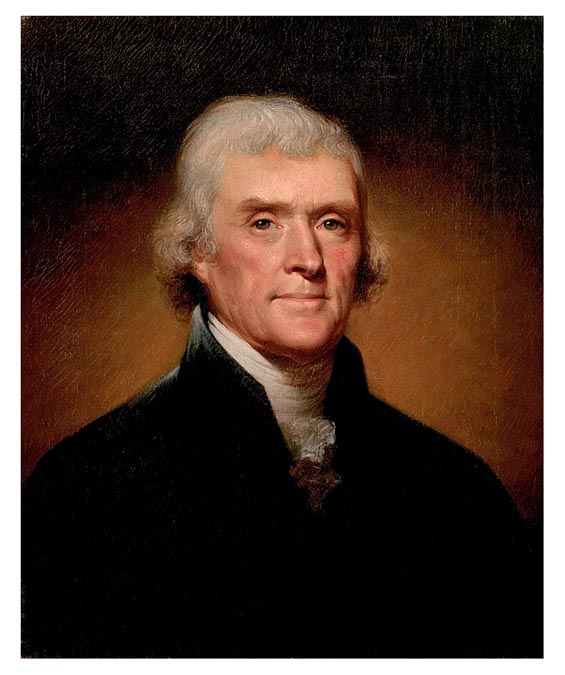
“What a mass of happiness had we travelled over.” —Thomas Jefferson, 1786
Thomas Jefferson sailed for France July 5, 1784 as commissioner and minister. His daughter Patsy, 12, found the sea voyage delightful. “There was a fine sunshine all the way with the sea as calm as a river,” she wrote. Jefferson consumed with his friends the four dozen bottles of wine he had brought aboard. His light mulatto slave James Hemings was 19 years old.

James would be enrolled to learn the art of French cooking so he could give fashionable dinner parties for Jefferson and his distinguished guests and to bring back the art to the United States. In return Jefferson promised James his freedom.
Jefferson wrote to both James Madison and James Monroe to visit him in Paris. “How little do my countrymen know what precious blessing they are in possession of, and what no other people on earth enjoy.”
King Louis had taken Madame du Barry as his mistress and she began to make light, flavorful, French dishes. At one dinner she prepared for the king, dishes served included a pheasant consomme, poached chicken in cream, watercress salad, crayfish in Sauternes and peach ice and strawberries in maraschino, washed down by a liqueur made of green walnuts. Louis was so pleased with the meal that he considered giving her the cordon bleu, an honor formerly reserved for men.
Meanwhile, Jefferson embarked on a three and a half months grand tour of Europe during which he wanted to see “its architecture, painting, sculpture, antiquities, agriculture, and the condition of the laboring poor.” He went alone and thought that “ones travels more usefully when they travel alone, because they reflect more.”
In the province of Beaujolais, Jefferson examined vineyards, orchards and wheat fields, staying at the Chateau de Laye-Epinaye. At the Tain-l’Hermitage, Jefferson enjoyed the white wines and decades later when he was president of the United States (1801-1809), he ordered five hundred bottles of Hermitage white for the White House wine cellar.
Going south he passed through a series of poor villages where the laborers lived in huts made of mud and stone. Still enforced was the medieval decree that restricted all wild game to the nobility. A peasant who was caught netting a pheasant or trapping a rabbit would be imprisoned for the first offense and executed if he repeated his crime.
While in Lombardy, a province of northern Italy, Jefferson wanted the quality rice samples grown there to be sent back to the planters in South Carolina. He was told it was impossible because the law forbade the export of seeds and the penalty for attempting to transport the grain out of the country was death. Undeterred, he took the risk and bribed a muleteer to smuggle sacks of the rice out of Italy. This action never troubled his conscience!
Returning to the States in 1789, Jefferson filled 86 crates with kitchen utensils and equipment including a pasta-making machine from Italy. He packed wines, cheeses, olive oil and Maille mustard, his favorite. He took the harpsichord, crates of books, sculptures he had commissioned of Washington, Franklin and Madison.
Slave James continued to serve Jefferson for the next several years until September 15, 1796 when he was given his freedom and James went to Philadelphia where he found work as a cook.
Thomas Jefferson, brilliant leader and statesman for the ages, died at Monticello July 4, 1826, the same day as former president John Adams.

